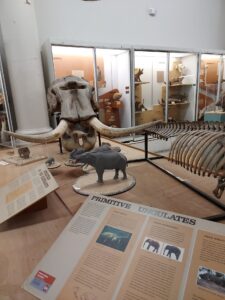Circular Economy for Museums
A circular economy means keeping things in use for as long as possible to deliver the highest value it can over the lifetime of a product. By reusing and recycling, the lifespan of the materials can expand beyond the intended use of the original product.
Why are circular economies important?
Current global manufacturing and consumption practices are wholly unsustainable for our planet. Many items can only be used once or replaced often. Gathering raw materials, making, shipping, and packing the final products harms the environment.
If the world’s population keeps growing as expected (reaching 9.6 billion by 2050), we would need three Earths to have enough resources for the way we live now.
We need to move away from these harmful production and consumption behaviours. This change is something we can all contribute to.
How can museums support circular economies?
Since these are global goals and issues, it might feel like you can’t do much to help. But every person uses things, and everyone can control and change their own behaviour.
For museums, it’s important to be careful about what you use and how you use it. A good rule is to use less, reuse things when you can, and recycle things you don’t need anymore. The best thing for the environment is to not make things in the first place.
But we can’t stop using everything, so it’s best to choose things that can be used more than once. When you have to throw something away, make sure it gets recycled.
Some things can only be used once, and there’s no way to recycle them. Museums should try to use as little of these things as possible.
Resources for museums
The Knowledge Hub at Zero Waste Scotland is an excellent source of information on moving to a circular economy. The Hub has a variety of guides, webinars, and case studies to suit all experience levels.
There are websites across the UK that specialise in selling, buying, giving away and sharing of second-hand usable goods. They are a great to avoid throwing out resources. It can also be a way of buying high quality goods for less.
Three of these websites support the circular economy within the wider culture and heritage sector. They specialise in goods and services relating to museums, arts, theatres, and anything related to the culture sector.
There are also more generic ones which may still have something for your museum.
If your museum makes sustainability a big part of how it works, it can affect how you plan projects and exhibits. Instead of buying new stuff right away, think about using what you already have, like a specific display cabinet or exhibition board. Design your exhibit based on what you already own, rather than always buying new things.
Circular Economy examples from museums
Find out more about how museums are approaching the issue of moving to a circular economy.
If you have any questions or want to get in contact to talk about carbon management or any other environmental issues, please contact us at climate@museumsgalleriescotland.org.uk.
